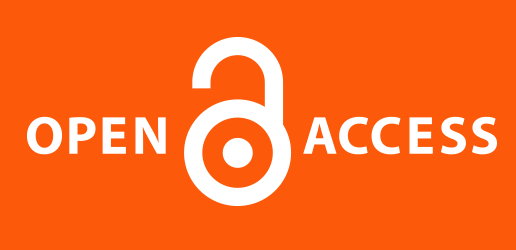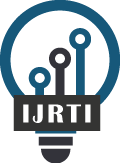|
International Journal for Research Trends and Innovation
International Peer Reviewed & Refereed Journals, Open Access Journal
ISSN Approved Journal No: 2456-3315 | Impact factor: 8.14 | ESTD Year: 2016
Scholarly open access journals, Peer-reviewed, and Refereed Journals, Impact factor 8.14 (Calculate by google scholar and Semantic Scholar | AI-Powered Research Tool) , Multidisciplinary, Monthly, Indexing in all major database & Metadata, Citation Generator, Digital Object Identifier(DOI)
|
Issue: December 2025
Volume 10 | Issue 12
Review Result and Publication of Paper within : 2-3 days
Click Here For more DetailsFor Authors
Forms / Download
Published Issue Details
Editorial Board
Other IMP Links
Facts & Figure
Impact Factor : 8.14
Issue per Year : 12
Volume Published : 10
Issue Published : 115
Article Submitted : 19445
Article Published : 8041
Total Authors : 21252
Total Reviewer : 769
Total Countries : 144
Indexing Partner
Licence
This work is licensed under a Creative Commons Attribution-NonCommercial 4.0 International License







|
Published Paper Details
|
|
| Paper Title: | A study to evaluate effectiveness of Structured Teaching Program (STP) regarding knowledge of Tuberculosis (TB) and importance of drug regimen among Tuberculosis patients visiting urban designated microscopy centers (DMC) |
| Authors Name: | RAKHI JOHN MORESHWAR , Mrs. Jessica N.Wagmare |
| Download E-Certificate: | Download |
| Author Reg. ID: |
IJRTI_182970
|
| Published Paper Id: | IJRTI2207080 |
| Published In: | Volume 7 Issue 7, July-2022 |
| DOI: | |
| Abstract: | Abstract: Background In 2015, there were an estimated 10.4 million new (incident) TB cases worldwide, of which 5.9 million (56%) were among men, 3.5 million (34%) among women and 1.0 million (10%) among children. People living with HIV accounted for 1.2 million (11%) of all new TB cases. Six countries accounted for 60% of the new cases: India, Indonesia, China, Nigeria, Pakistan and South Africa. Global progress depends on major advances in TB prevention and care in these countries. Worldwide, the rate of decline in TB incidence remained at only 1.5% from 2014 to 2015. As per Global Tuberculosis report 2016 The TB epidemic is larger than previously estimated, reflecting new surveillance and survey data from India. However, the number of TB deaths and the TB incidence rate continue to fall globally and in India. This needs to accelerate to a 4–5% annual decline by 2020 to reach the first milestones of the End TB Strategy. Objectives: 1. To assess the existing knowledge of Tuberculosis (T.B.) and importance of drug regimen among the TB patient visiting urban (DMC) 2. To evaluate the effectiveness of STP regarding knowledge of T.B. and importance of drug regimen among the TB patients visiting urban (DMC). 3. To find out the association between the pre-test knowledge score of TB patients with demographic variables. Methodology: Research design: In this study quasi experimental, one group per-test-post-test design was used for the present study to determine the effectiveness of structured teaching programme on knowledge of tuberculosis and importance of drug regimen. Setting of the study-This study was conducted in Designated Microscopy Centre. Population In his study the population is a Tuberculosis patient visiting Designated Microscopy Centers. Target population in the present study the target population was patients with Tuberculosis visited DMC. Accessible population in the present study the accessible population was TB patients those were visiting Designated Microscopy Centers. Sample and sampling technique: A sample is a population that represents the entire population; thus, it is the subject of population elements. Sample size: The sample size was 60 TB Patients. Sampling technique: Cluster sampling technique was used for the study. Attribute variables: -Personal characteristics of study subjects were included such as Religion, Type of family, Monthly family income, Type of treatment, Education, Source of information Extragenaus variables: Newspaper, Group counselling, Health pamphlets. These variables were can not be controlled. Result: It was proved that there was increase in the knowledge of nursing students after implementation of structured teaching program, thus structured teaching program regarding tuberculosis and importance of drug regimen was effective. Conclusion: The analysis and interpretation of the data collected which shows there is effectiveness of structured teaching program regarding knowledge of TB and importance of drug regimen among TB patient. There is association between the pre-test knowledge score with selected demographic variables. Thus H1 and H2 was accepted. |
| Keywords: | Evaluate effectiveness, STP,knowledge, Tuberculosis patient |
| Cite Article: | "A study to evaluate effectiveness of Structured Teaching Program (STP) regarding knowledge of Tuberculosis (TB) and importance of drug regimen among Tuberculosis patients visiting urban designated microscopy centers (DMC)", International Journal of Science & Engineering Development Research (www.ijrti.org), ISSN:2455-2631, Vol.7, Issue 7, page no.559 - 569, July-2022, Available :http://www.ijrti.org/papers/IJRTI2207080.pdf |
| Downloads: | 000205113 |
| ISSN: |
2456-3315 | IMPACT FACTOR: 8.14 Calculated By Google Scholar| ESTD YEAR: 2016 An International Scholarly Open Access Journal, Peer-Reviewed, Refereed Journal Impact Factor 8.14 Calculate by Google Scholar and Semantic Scholar | AI-Powered Research Tool, Multidisciplinary, Monthly, Multilanguage Journal Indexing in All Major Database & Metadata, Citation Generator |
| Publication Details: |
Published Paper ID: IJRTI2207080
Registration ID:182970
Published In: Volume 7 Issue 7, July-2022
DOI (Digital Object Identifier):
Page No: 559 - 569 Country: sangli, Maharashtra, India Research Area: Other Publisher : IJ Publication Published Paper URL : https://www.ijrti.org/viewpaperforall?paper=IJRTI2207080 Published Paper PDF: https://www.ijrti.org/papers/IJRTI2207080 |
| Share Article: | |
|
Click Here to Download This Article |
|
| Article Preview | |
|
|
|
Major Indexing from www.ijrti.org
| Google Scholar | ResearcherID Thomson Reuters | Mendeley : reference manager | Academia.edu |
| arXiv.org : cornell university library | Research Gate | CiteSeerX | DOAJ : Directory of Open Access Journals |
| DRJI | Index Copernicus International | Scribd | DocStoc |
ISSN Details
 |
 |
ISSN: 2456-3315
Impact Factor: 8.14 and ISSN APPROVED,
Journal Starting Year (ESTD) : 2016
DOI (A digital object identifier)
 Providing A digital object identifier by DOI.ONE How to Get DOI? |
Conference
Open Access License Policy
Important Details
Join RMS/Earn 300
WhatsApp
Click Here
Click Here
Indexing Partner |
|||
| Copyright © 2025 - All Rights Reserved - IJRTI | |||






